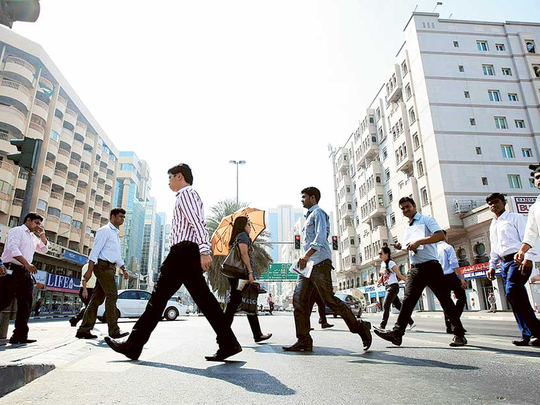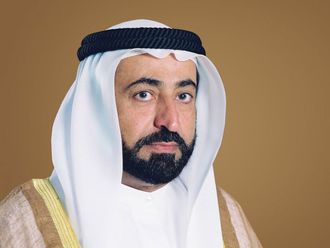
Dubai: The employment rate in the UAE increased by 10 per cent in 2014 when compared to 2013, the Ministry of Labour said on Tuesday and, for the first time in 44 years, brings the total number to 4,417,000 workers across different sectors.
Humaid Rashid Bin Deemas Al Suwaidi, Assistant Undersecretary of Labour Affairs, said, “The ministry has issued approximately 1,212,000 work permits over last year, which also witnessed the termination of work for about 821,000 labourers.”
In 2014, the construction, business and industrial sectors accounted for about 70 per cent of total employment in private sector establishments registered with the ministry, while the health sector was recorded as the fastest growing in terms of employment rate.
According to Al Suwaidi, the construction sector tops the list of the three major employers, where the number of workers in 2014 reached about 1,500,000, accounting for about 34 per cent of total employment.
It was followed by the business sector by about 1,050,000 workers and 24 per cent of total employment; then comes the industrial sector with about 500,000 workers standing at 12 per cent of the total employment.
“The health sector leads the list of the top three fast growing sectors in employment rates in 2014,” Al Suwaidi said, “It accounts for 25.4 per cent of the total increase in the number of new employees. This indicates a trend towards a knowledge-based economy.”
“Real estate, leasing, and business services sectors comes in second with 18.6 per cent; then comes hotels, restaurants, transportation, and storage sectors, which were relatively close by 12.3 per cent.”
Al Suwaidi also said that first and second class employment (in terms of skill level) recorded the highest percentage in terms of the increase in the number of employees by 14 per cent; while third, fourth, and fifth class employment increased by 9 per cent.
Al Suwaidi revealed that the labour market has witnessed significant mobility in the number of employees who transferred to other facilities during the period after the implementation of the new transfer system in 2011 compared to the period before the implementation of the system.
The new transfer system is based on two basic requirements. First, both parties (employer-employee) consent to the termination of the work relation; second, the employee has spent at least two years at the previous workplace.
Cases of exemption from the first requirement include workers whose previous employers have violated the terms of their contract. As for exemption from the second requirement, it includes employees who wish to enrol in a first-class employment skill job with a minimum salary of Dh12,000 or a second-class employment skill job with a minimum salary of Dh7,000 or a third category employment skill job of a minimum salary of Dh5,000.
“The total number of workers who transferred to other facilities during 2011 before the implementation of the new transfer system was 105,000; whereas transfer cases increased exponentially during the years following 2011 to reach 170,000 employees by the end of last year, an increase rate of 62.5 per cent.”
He also said that the rate of increase in the number of workers listed under first and second class employment who transferred to other facilities in 2014 reached 14 per cent; whereas, the rate of increase in the third, fourth and fifth employment classes was about 7 per cent.












